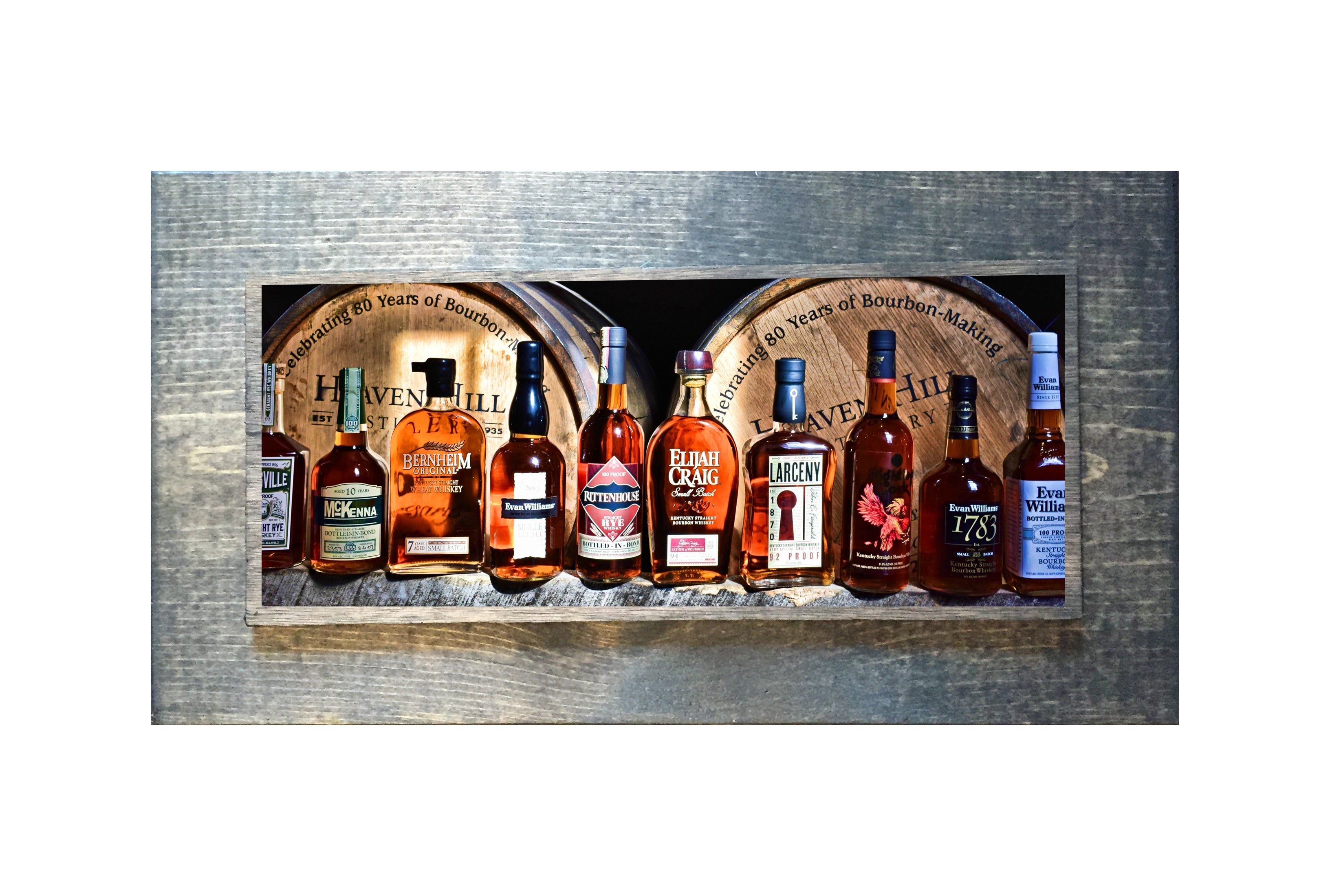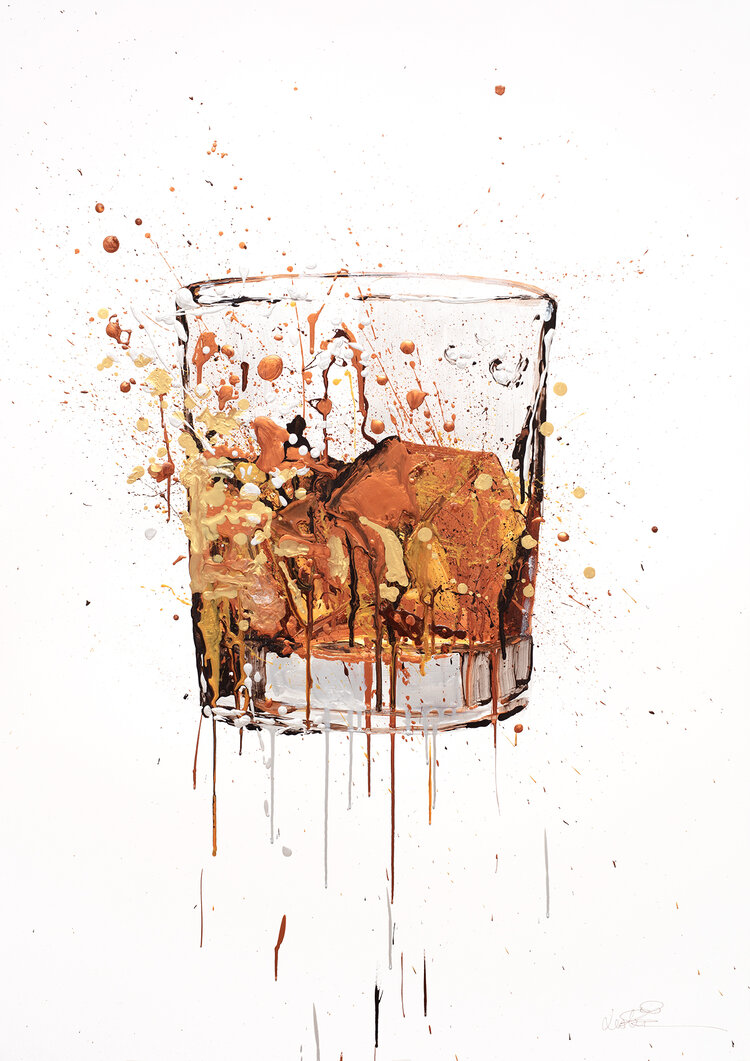Whiskey Art: Catching the Essence of Distillation in Every Brushstroke
Whiskey Art: Catching the Essence of Distillation in Every Brushstroke
Blog Article
The Significance of Whiskey Art in Celebrating Heritage and Workmanship in the Beverage Industry
The complex partnership in between bourbon art and the event of heritage and workmanship within the drink industry can not be overemphasized. Via thoughtfully made tags and containers, whiskey brands envelop their historical roots and the artisanal abilities that specify their production approaches.
The Historic Roots of Whiskey
At the heart of bourbon's attraction lies a rich tapestry of historic roots that map back to old human beings. The beginnings of whiskey can be connected to the purification techniques of the Sumerians and Babylonians around 2000 BCE, where very early types of fermented grain drinks started to arise. It was in the Middle Ages that the art of distillation evolved significantly, especially in Ireland and Scotland, leading to the creation of bourbon as we recognize it today.
The term "bourbon" itself stems from the Gaelic word "uisce beatha," meaning "water of life." This expression emphasizes the cultural relevance of scotch in Celtic societies, where it was usually connected with rituals, celebrations, and common bonding. By the 15th century, distillation became an identified craft within reclusive communities, leading the way for the establishment of lawful distilleries.
As profession paths increased, bourbon's popularity grew, going beyond regional boundaries and recording the interest of connoisseurs worldwide. Limited Edition. This historic journey reflects not only the craftsmanship behind whiskey production yet likewise its essential role in social and social contexts, marking it as a substantial beverage throughout history
Artistic Expression in Branding
Scotch branding stands as an engaging junction of creativity and business, where aesthetic identity plays a crucial function fit consumer assumption. The appearances of bourbon tags, product packaging, and advertising and marketing materials mirror not only the brand name's tale yet likewise its core values and heritage. Through creative expression, distilleries communicate a narrative that resonates with consumers, stimulating feelings and triggering links.
Using color, typography, and imagery in branding serves to set apart products in a saturated market. As an example, traditional themes might evoke a sense of authenticity and workmanship, while contemporary styles can represent advancement and forward-thinking. This critical creative direction improves brand recognition and commitment, allowing consumers to create an individual relationship with the scotch they pick.
Furthermore, imaginative expression in branding frequently offers as an event of local heritage. Distilleries regularly integrate regional symbols or historical referrals into their designs, developing a local color that invites customers to partake in a broader cultural experience. Eventually, the artistry behind bourbon branding not only improves aesthetic appeal yet likewise enhances the overall story of the brand name, cultivating a much deeper recognition for the workmanship and heritage embedded in each bottle.
Workmanship in Container Layout
The artistry apparent in scotch branding prolongs beyond aesthetic identification to incorporate the workmanship associated with bottle layout. Each container functions as a vessel not just for the spirit within, yet likewise for the tale it informs concerning its practice, quality, and origin. The layout process requires meticulous focus to detail, as elements such as closure, form, and material contribute significantly to the total understanding of the whiskey.
Craftsmanship in container design entails picking premium glass that can boost the bourbon's color and clearness, while additionally offering a responsive experience for the consumer. The silhouette of the bottle should be both functional and visually appealing, typically reflecting the heritage of the brand name. Several distilleries select special forms or printed logo designs that stimulate a sense of authenticity and history.
In addition, the tag design and typography play a critical function in interacting the brand's narrative. Realism Art. A well-crafted bottle not just mesmerizes the consumer's eye but also enhances the brand name's dedication to high quality and practice. By doing this, the workmanship of bottle design becomes a crucial facet of the bourbon experience, combining artistry with an extensive regard for heritage
Cultural Relevance of Whiskey Art
Celebrating tradition and craftsmanship, the social importance of whiskey art goes beyond simple visual appeals, intertwining with the historic and social stories of the areas where it comes from. Each bottle works as a canvas, depicting the one-of-a-kind tales, folklore, and traditions that have shaped local whiskey-making methods. The elaborate styles often mirror the heritage of the distillers, integrating signs and themes that resonate with the society and worths of their neighborhoods.

Additionally, bourbon art plays an important function in public events and events, functioning as a tangible link in between people and their shared experiences. By appreciating the virtuosity in scotch product packaging, customers grow a deeper Website understanding and respect for the craft, inevitably improving their enjoyment of the drink itself.
Modern Trends in Scotch Presentation
Recently, the presentation of scotch Look At This has progressed to mirror modern tastes and fads while still honoring standard craftsmanship - Realism Art. Distilleries are significantly concentrating on aesthetic elements that boost the total drinking experience, linking the void between heritage and modernity
Cutting-edge bottle styles have arised, commonly including sustainable materials and artistic labels that tell compelling tales. Several brand names now team up with neighborhood musicians, instilling their items with unique aesthetic expressions that resonate with consumers. Additionally, limited-edition releases are commonly packaged in collectible containers, adding worth and appeal for aficionados.

Final Thought
To conclude, whiskey art acts as an essential conduit for expressing the heritage and workmanship intrinsic in the beverage sector. Via detailed branding, innovative bottle designs, and culturally substantial artistic aspects, bourbon brands properly recognize their practices and link with customers. This creative narrative not just raises the admiration of whiskey however additionally reinforces neighborhood identity and pride among producers. Inevitably, bourbon art plays a crucial role in preserving and celebrating the rich cultural tapestry of whiskey-making.


Craftsmanship in bottle style entails selecting high-grade glass that her explanation can improve the scotch's color and quality, while additionally giving a responsive experience for the consumer. In this way, the workmanship of bottle design becomes an important facet of the whiskey experience, merging virtuosity with an extensive regard for heritage.
In verdict, bourbon art offers as a crucial channel for expressing the heritage and craftsmanship intrinsic in the beverage market.
Report this page